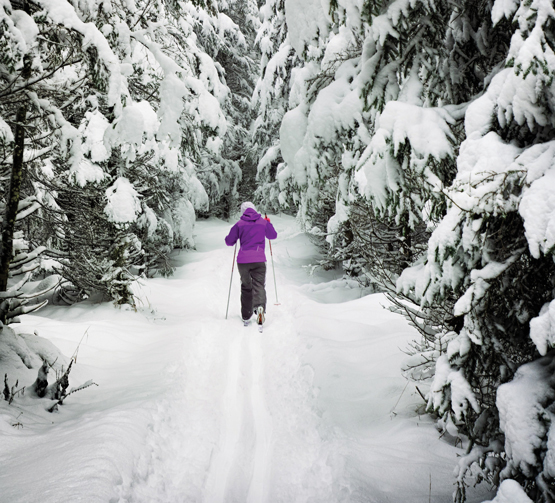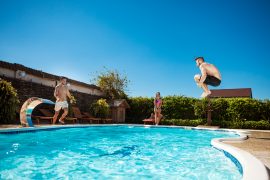For winter enthusiasts, the choice between cross-country skiing and downhill skiing becomes a pivotal decision that defines how you enjoy the season. Even though both types of skiing require skis, these two sports are actually very different, each offering unique thrills and challenges. In the quest for the perfect winter sport, we compare downhill and cross-country skiing to help you decide how to spend your snowy days.
Downhill skiing: Also known as alpine skiing, in downhill skiing you ride a chairlift to the top of a mountain or hill and ski down. Downhill skiing can be a heart-pounding adrenaline-fueled adventure as you speed down the mountain.
Cross-country skiing: Also known as Nordic skiing, cross-country skiing involves gliding through forested trails that are most often flat or slightly hilly.
Whether you prefer the rhythmic glide of cross country skiing through serene landscapes or the adrenaline-fueled descent in downhill skiing, the type of skiing you’ll enjoy comes down to the type of winter experience you’re seeking, how far you’re willing to travel and physical fitness levels.

Go the distance
You don’t need to travel far to find cross-country trails in Halton region. Crawford Lake, Mountsberg and Hilton Falls are popular areas for Nordic ski enthusiasts.
Mountsberg Conservation Area has two ski trails that run along the shoreline and through the woods and sugarbush. Bronte Creek Provincial Park is home to plenty of trails, although not all are maintained. Hilton Falls and Crawford Lake in Milton also offer various cross-country ski trails.
For downhill skiing, the most accessible locations near Halton are Glen Eden in Milton, Chicopee in Kitchener and Hockley Valley near Orangeville. If you’re willing to take on a longer road trip, there’s Mount St. Louis Moonstone just north of Barrie and Blue Mountain in Collingwood.
While there are more cross-country trails in Halton region than alpine ski hills, you are reliant on Mother Nature to grace those trails with snow. Alpine resorts will make their own snow throughout the season as long as the weather is cold enough.
Physical challenge
Cross-country skiing provides a full-body workout. “Cross-country skiing can be more physically taxing for a first experience as it requires the skill to master that sliding, as well as the physical exercise aspect to keep moving through the trails,” says AJ Leeming, senior manager, programs & services at Glen Eden. Downhill skiing has gravity on your side to keep you moving, and lifts to help you get to the top of the hill.

Comparing costs
Getting equipped for downhill skiing will typically ring up a higher bill than cross-country, but savings can be found if you purchase second hand. For both sports, you’ll need skis, boots, poles and warm gear to withstand the cold outdoors. Downhill skiing will additionally require goggles, a helmet and ski pants (none of which are necessary for cross-country).
If you’re downhill skiing, you’ll also require a lift ticket every time you hit the slopes, which can quickly add up. These often run from $50 to $100+ for an adult; season’s passes can lower the cost per day if you plan to ski a lot. Cross-country skiing at a Halton conservation area will set you back the cost of a day pass (around $12 per adult).
Ready to give skiing a try?
If you’re new to downhill skiing, Leeming recommends a beginner lesson. “A lesson with a certified instructor will help make it safe and fun, ensuring you discover all the little tips and tricks to make it as easy as possible,” he says. Ask if instructors are Canadian Ski Instructor Alliance (CSIA) certified. Cross-country lessons can also be helpful, but watching a couple of YouTube videos can be enough to get you started.
Whether you crave the exhilarating speed of downhill skiing or the picturesque landscapes of cross-country, both offer a unique experience to enjoy our
snowy winters.






